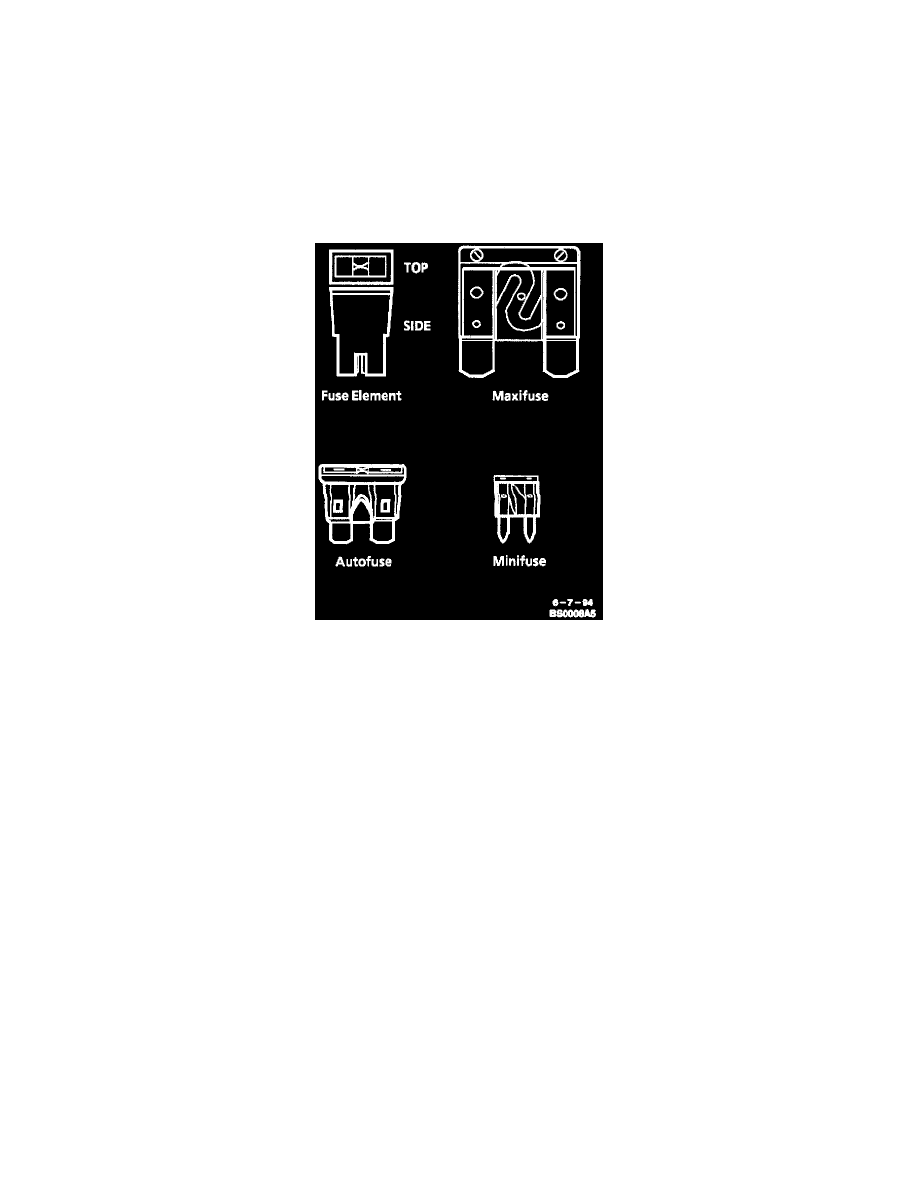Caprice Wagon V8-350 5.7L (1994)

There are two types of non-cycling circuit breakers. One type is mechanical and is nearly the same as a cycling breaker. The difference is a small
heater wire within the non-cycling circuit breaker. This wire provides enough heat to keep the bimetallic element open until the current source is
removed.
The other type is solid state, called out in this section as Electronic Circuit Breaker (ECB). This device has a Positive Temperature Coefficient. It
increases its resistance greatly when excessive current passes through it. The excessive current heats the ECB. As it heats, its resistance increases,
therefore having a Positive Temperature Coefficient. Eventually the resistance gets so HI that the circuit is effectively open. The ECB will not
reset until the circuit is opened, removing voltage from its terminals. Once voltage is removed, the circuit breaker will re-close within a second or
two.
Fuses
Fuse Devices
The most common method of automotive wiring circuit protection is the fuse. A fuse is a device that, by the melting of its element, opens an electrical
circuit when the current exceeds a given level for a sufficient time. The action is non-reversible and the fuse must be replaced each time a circuit is
overloaded or after a malfunction is repaired.
